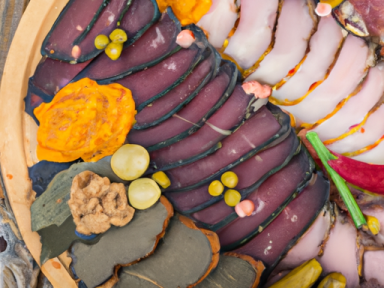Preserving with Salt: An Ancient and Effective Technique
When it comes to being prepared for an uncertain future, food preservation is a vital skill to master. In times of scarcity or emergencies, having a stockpile of preserved foods can mean the difference between thriving and struggling. One of the oldest and most effective methods of food preservation is using salt. Let’s delve into the technique of preserving foods with salt and understand why it’s still a valuable practice today.
The Power of Salt
Salt has been used for centuries as a natural preservative due to its remarkable properties. It inhibits the growth of bacteria by drawing out moisture, which prevents spoilage. Moreover, salt enhances the flavor of foods, making them even more enjoyable to eat.
Preserving with salt requires little equipment or energy, making it a perfect technique for homesteaders or those aiming for self-reliance. With just some salt and containers, you can store or extend the shelf life of a wide variety of foods, including meat, fish, fruits, and vegetables.
The Process
The process of preserving with salt is surprisingly simple, yet incredibly effective. Follow these steps to get started:
- Choose your salt: Opt for high-quality salt, such as sea salt or kosher salt. Avoid iodized salt, as it may affect the taste of your preserved foods.
- Prepare your food: Trim any excess fat, bones, or blemishes from the food you wish to preserve. It’s important to work with fresh, high-quality ingredients for optimal results.
- Add a salt layer: In a clean container, place a layer of salt at the bottom. This layer should be approximately 1/4 to 1/2 inch thick.
- Layer the food and salt: Arrange your prepared food on top of the salt layer, making sure there is space between each piece or layer of food.
- Add more salt: Sprinkle a generous amount of salt over the first layer of food, making sure to cover it completely. The salt acts as a barrier, preventing the growth of microorganisms.
- Repeat the process: Continue layering your food and salt until all the food is used or until the container is full. Finish with a final layer of salt.
- Seal the container: Close the container tightly to prevent air, moisture, or pests from getting inside. You can use a lid, plastic wrap, or even wax paper with an elastic band.
- Store and wait: Place the container in a cool, dry place, such as a cellar or pantry. The duration of the preservation process varies depending on the food being preserved. Check your resources or experiment to determine the appropriate time.
- Rinse and enjoy: When you’re ready to consume the preserved food, remove it from the container and rinse off the excess salt. Soak the food in water to rehydrate it if needed, then cook or prepare it according to your preference.
Expanding Your Knowledge
Preserving with salt is just one method in a broad range of food preservation techniques. As you dive deeper into the art of self-reliance, consider exploring other preservation methods such as canning, smoking, and fermenting. Each technique offers its own unique benefits and flavors.
Remember, the key to successful food preservation is practice and experimentation. Learn from others in the self-reliance community, read books, and attend workshops to expand your knowledge and refine your skills.
By embracing the ancient technique of preserving with salt, you are not only ensuring your family’s survival during difficult times but also connecting with a time-honored tradition of self-reliance. So, take the first step today and start preserving your own food with salt.




GIPHY App Key not set. Please check settings